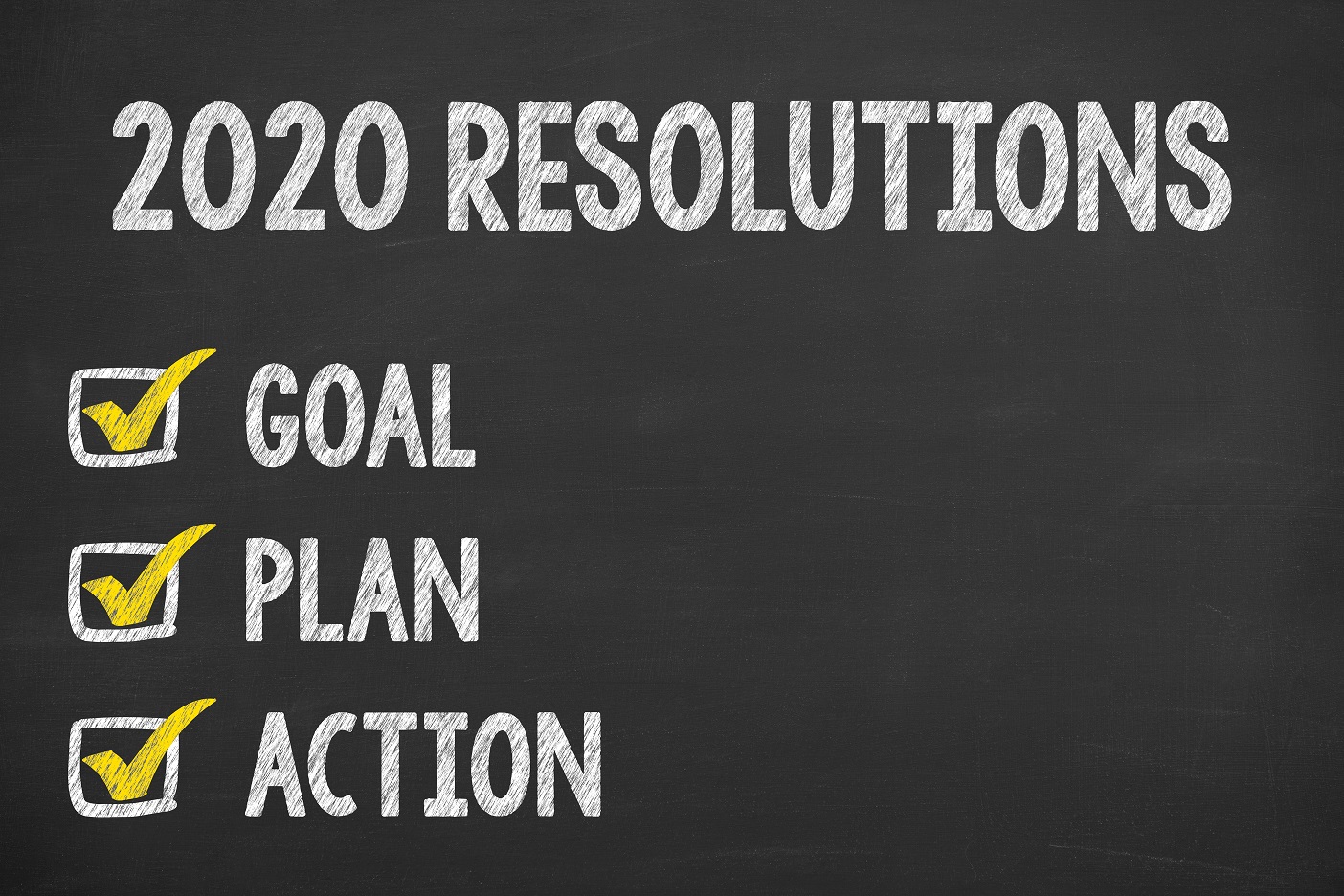Eight ideas to make filing your tax return easier
 Consider these suggestions for helping to make tax season smooth sailing this year for your small business:
Consider these suggestions for helping to make tax season smooth sailing this year for your small business:
- Make your estimated tax payments. Tuesday, January 18th is the due date to make your 4th quarter payment for the 2021 tax year. Now is also the time to create an initial estimate for first quarter 2022 tax payments. The due date for this payment is Monday, April 18.
- Reconcile your bank accounts. Preparing an accurate tax return starts with accurate books. Reconciling your bank accounts is the first step in this process. Consider it the cornerstone on which you build your financials and your tax return. Up-to-date cash accounts will also give you confidence that you’re not over-reporting (or under-reporting!) income on your tax return.
- Organize those nasty credit card statements. If you use credit cards for your business, develop an expense report for these expenditures, if you have not already done so. The report should recap the credit card bill and place the transactions in the correct expense accounts. Attach actual copies of the expenses in the credit card statement. You will need this to support any sales tax paid in case of an audit. Use this exercise to show you are only including business-related expenses by reimbursing your business for any personal use of the card.
- Reconcile accounts payable. One of the first tax deadlines for many businesses is issuing 1099 forms to vendors and contractors at the end of January. Get your accounts payable and cash disbursements up-to-date so you have an accurate account of which vendors you paid.
- Get your information reporting in order. Now identify anyone you paid during the year that will need a 1099. Look for vendors that are not incorporated like consultants or those in the gig economy and don’t forget your attorneys. You will need names, addresses, identification numbers (like Social Security numbers) and amounts billed. Send out W-9s as soon as possible to request missing information.
- File employee-related tax forms. If you have employees, file all necessary W-2 and W-3 forms, along with the applicable federal and state payroll returns (Forms 940 and 941). Do this as soon as possible in January to allow time to identify any potential problems.
- Compile a list of major purchases. Prepare a list of any purchases you made during 2021 that resulted in your business receiving an invoice for $2,500 or more. Once the list is compiled, find detailed invoices that support the purchase and create a fixed asset file. This spending will be needed to determine if you wish to depreciate the purchase over time, take advantage of bonus depreciation, or expense the purchase using code section 179. Your choices create a great tax planning tool.
- Review the impact of COVID-19. There are a number of federal and state initiatives that will need to be considered when filing your 2021 tax return. If you received payroll credits for employee retention or have a Paycheck Protection Program loan that needs to be accounted for this year, be prepared with the details. It will be important to correctly account for these funds.
Here are some ideas to lower your business taxes, get organized, and to prepare for filing your 2021 tax return.
 As 2021 winds down, here are some ideas to consider in order to help manage your small business and prepare for filing your upcoming tax return.
As 2021 winds down, here are some ideas to consider in order to help manage your small business and prepare for filing your upcoming tax return.
- Identify all vendors who require a 1099-MISC and a 1099-NEC. Obtain tax identification numbers (TIN) for each of these vendors.
- Determine if you qualify for the Paycheck Protection Program (PPP) safe harbor threshold that allows you to deduct certain 2020 expenses on your 2021 tax return.
- Consider accelerating income or deferring earnings, based on profit projections.
- Section 179, or bonus depreciation expensing versus traditional depreciation, is a great planning tool. If using Section 179, the qualified assets must be placed in service prior to year-end.
- Business meals are 100% deductible in 2021 if certain qualifications are met. Retain the necessary receipts and documentation that note when the meal took place, who attended and the business purpose of the meal on each receipt.
- Consider any last-minute deductible charitable giving including long-term capital gain stocks.
- Review your inventory for proper counts and remove obsolete or worthless products. Keep track of the obsolete and worthless amounts for a potential tax deduction.
- Set up separate business bank accounts. Co-mingling business and personal expenses in one account is not recommended.
- Create expense reports. Having expense reports with supporting invoices will help substantiate your tax deductions in the event of an audit.
- Organize your records by major categories of income, expenses and fixed assets purchased to make tax return filing easier.
- Review your receivables. Focus on collection activities and review your uncollectable accounts for possible write-offs.
- Make your 2021 fourth-quarter estimated tax payment by January 18, 2022.
Here are four ways to make sure the preparation of your tax return keeps humming along until it gets filed.
- Keep tax documents in one place. Missing items are one of the biggest reasons filing a tax return gets delayed! Find a place in your home and put all tax documents in this one place as you receive them. Common missing items this year will include the new 1099-NEC for any taxpayers that are contractors, consultants or part of the gig economy.
- Organize documents by type. Every tax professional has a story of someone bringing their documents to them in a shoebox or storage container. All this does is increase the amount of time it takes to prepare your return, so it’s best to sort your documents in tax return order. Pull out last year’s tax return and create folders for each section including income, business/rental information, adjustments to income, itemized deductions, tax credit information and a not-sure bucket.
- Create list of special events. You receive a Form W-2 from your employer every year. You may get a 1099-INT from your bank if you earn interest income on your deposit accounts. But selling a home usually doesn’t happen every year. Retiring from a 40-year job doesn’t happen every year. Sending a child to college also doesn’t happen every year (although it might seem like it does!). If you don’t write down these unusual events as they happen, you might forget them when your tax return is being prepared. And you may not remember until the moment your return is about to be filed. This is sure to cause delays.
- Don’t forget your signature! You may be surprised to learn that even if you electronically file your tax return, you still must sign Form 8879, which authorizes the e-filing of your return. So, whether it’s a traditionally-filed paper tax return or one filed electronically, a signature is required.
 These are four of the more common reasons why the preparation of your tax return may get delayed. Be prepared and file your return without a hitch!
These are four of the more common reasons why the preparation of your tax return may get delayed. Be prepared and file your return without a hitch!
Which unique method of budgeting will work for you?
 You have your own unique personality, preferences and lifestyle. Likewise, how you manage and organize your finances can have its own personality, including how you budget. Here are five different methods of budgeting, each with a distinct way of helping you organize your spending and finances.
You have your own unique personality, preferences and lifestyle. Likewise, how you manage and organize your finances can have its own personality, including how you budget. Here are five different methods of budgeting, each with a distinct way of helping you organize your spending and finances.
- Traditional budget. Use last year’s budget as a base, make any necessary adjustments due to changes in your income or expenses, and create your budget by taking your income minus your expenses to equal the amount you have to spend.
- Envelope budget. Keep a set amount of cash for the month in envelopes labeled with an expense category like groceries, clothing, eating out, entertainment, etc. Use one envelope per expense category. If you run out of money in one envelope, you can dip into other envelopes, but this will obviously impact spending in those areas.
- Reverse budget. Instead of stashing away the money left over after you’re done spending for the month, first take out your portion for savings and then spend the amount of money that remains. Reverse budgeting is an effective way to prioritize saving for your future retirement, an emergency or rainy-day fund, or other big expenses like a vacation, a new car, or a down payment on a house.
- Zero-based budget. Know where each dollar is going and record every single dollar spent. Also called the zero-sum or down-to-the-dollar budget, this method helps you get specific about spending and keeping track of all your dollars. Instead of one amount allotted for food, you know exactly how much you will spend on groceries, lunch while at work, and dining out. Instead of one amount allotted for savings, you know exactly how much you are putting into retirement, loan repayment, and emergency savings.
- 50/20/30 budget. Stick to three spending categories. Each month, 50% of your take-home income goes toward needs, 20% toward savings, and 30% toward wants. Examples of needs are housing or car payments and groceries. Savings could be retirement money, paying off loans, and emergency funds. Wants include things like shopping, vacation, or entertainment. Less detailed than the zero-based or envelope methods but more detailed than traditional or reverse budgeting, the 50/20/30 method helps you monitor money habits by helping you stick to three categories every month.
The best budget approach? One that works for you and one that you will continue to use. So pick an approach and try it. It can really change how you spend your money.
As always, should you have any questions or concerns regarding your tax situation please feel free to call.
 New Year’s resolutions get a bad rap — and for good reason. They are wildly unsuccessful. Millions of people have well-intentioned aspirations for the New Year, but only about one in 10 actually accomplish their goal, according to the Statistic Brain Research Center.
New Year’s resolutions get a bad rap — and for good reason. They are wildly unsuccessful. Millions of people have well-intentioned aspirations for the New Year, but only about one in 10 actually accomplish their goal, according to the Statistic Brain Research Center.
If you dig a little deeper into the reasons why they fail, you find it’s usually not the resolution itself, it’s in the execution. Here are four popular New Year’s resolutions and how to avoid messing them up:
- Resolution #1: Becoming healthier. The most popular resolution can take on many forms — losing weight, getting in better shape, eating healthier, and so on. This resolution usually fails because to be successful, it takes a major lifestyle change. You’re fighting against months or maybe years of poor behaviors, so expecting wholesale changes right out of the gate is not reasonable.
Make it fail-proof: Start with smaller, simpler goals like not eating after 8 p.m., or exercising for 20 minutes a day for three times a week. Hitting manageable goals will build momentum and create good habits. - Resolution #2: Spending less money. Depending on how much you spent on Christmas, this one might take care of itself for a few weeks. But if you don’t have a spending plan or budget, old spending habits will re-emerge.
Make it fail-proof: Take some time at the beginning of the year to jot down some long-term spending and savings goals and then work backwards to figure out how those goals will affect your weekly purchases. As the year goes on, continue to track your progress and evaluate your purchases. - Resolution #3: Getting more organized. Going from being disorganized to organized is not a quick fix. To make the switch, it takes an evaluation of your entire environment. Most people don’t have the time for such an extensive process so they buy some bins, stuff them full and call it good. That’s not going to work and it’ll cost you money.
Make it fail-proof: Instead, start small. Pick one room in your house or one aspect of your life to focus on, like health care bills or your tax documents. Once you get some traction, you can apply the methods you learned to other things. Incremental improvement is the best long-term approach. - Resolution #4: Spending less time on electronics. If this is a resolution that’s important to you, odds are you’ve had some trouble keeping electronic usage under control. With so many games, social media and streaming options at our fingertips, our brains are now conditioned to be engaged electronically at all times.
Make it fail-proof: One way to start to break this habit is to change the accessibility you have to your devices. Remove apps from your phone and keep your devices out of reach when you don’t need them. Another way to curb electronic usage is to form a different habit, such as reading.
Resolutions, whether at New Year’s or any other time, are a good thing. To be successful, more planning and attention are required than most people think. And if you slip up, don’t quit! Learn from your mistakes and keeping going.
 There’s still time to reduce your potential tax obligation and save money this year (and next). Here are some ideas to consider:
There’s still time to reduce your potential tax obligation and save money this year (and next). Here are some ideas to consider:
- Estimate your 2019 and 2020 taxable income. With these estimates you can determine which year receives the greatest benefit from a reduction in income. By understanding what the tax rate will be for your next dollar earned, you can understand the tax benefit of reducing income this year AND next year.
- Fund tax-deferred retirement accounts. An easy way to reduce your taxable income is to fully fund retirement accounts that have tax-deferred status. The most common accounts are 401(k)s, 403(b)s and various IRAs (traditional, SEP and SIMPLE).
- Take your required minimum distributions (RMDs). If you are 70½ or older, you need to take required RMDs from your retirement accounts by Dec. 31. Don’t forget to make all RMDs because the fines are hefty if you don’t — 50 percent of the amount you should have withdrawn.
Keep in mind, even if you don’t have RMDs yet, removing a planned amount from your retirement accounts each year may be more tax efficient than waiting until you are required to do so. - Manage your gains and losses. Rebalance your investment portfolio, and take any final investment gains and losses. When you have more losses than gains, up to $3,000 can be used to reduce your ordinary income. With careful planning, you can take advantage of this loss amount each year.
- Finalize your gift-giving strategy. Each year you may gift up to $15,000 without tax reporting consequences to as many individuals as you choose. Consider any gift-giving you wish to make up to the annual limit. This could include gifts of cash or property, and investments.
- Donate to charities. Consider making end-of-year donations to eligible charities. Donations of property in good or better condition and your charitable mileage are also deductible. Receiving proper documentation that acknowledges your contributions is important to ensure you obtain the full deduction. Have a plan by knowing your total deductions for the year to help you decide how much and when to donate. Pulling some donations planned for 2020 into 2019 may be a good strategy.
- Review your automated billing transactions. This is a good time to identify what automatic monthly expenses should be reviewed for reduction or elimination. You may also discover billing for services you thought were canceled. This specific review often catches errors that a simple account reconciliation may be missing.
- Organize records now. Start collecting and organizing your tax records to avoid the scramble come tax season.
- Develop your own list. Use these ideas as a jumping off point to create your own list of annual review items. It might also include reviewing college savings accounts, beneficiaries, insurance needs, wills, and going through an aging parent’s financial accounts.
 As the year draws to a close, there are several tax-saving ideas you should consider. Use this checklist to make sure you don’t miss an opportunity before the year is out.
As the year draws to a close, there are several tax-saving ideas you should consider. Use this checklist to make sure you don’t miss an opportunity before the year is out.
Retirement distributions and contributions. Make final contributions to your qualified retirement plan, and take any required minimum distributions from your retirement accounts. The penalty for not taking minimum distributions can be high.
Investment management. Rebalance your investment portfolio, and take any final investment gains and losses. Capital losses can be used to net against your capital gains. You can also take up to $3,000 of capital losses in excess of capital gains each year and use it to lower your taxable ordinary income.
Last-minute charitable giving. Make a late-year charitable donation. Even better, make the donation with appreciated stock you’ve owned more than a year. You often can make a larger donation and get a larger deduction without paying capital gains taxes.
Noncash donation opportunity. Gather up non-cash items for donation, document the items, and give those in good condition to your favorite charity. Make sure you get a receipt from the charity, and take a photo of the items donated.
Gifts to dependents and others. You may provide gifts to an individual of up to $14,000 per year in total. Remember that all gifts given (birthdays, holidays, etc.) count toward the annual total.
Organize records now. Start collecting and organizing your end-of-year tax records. Estimate your tax liability and make any required estimated tax payments.
Make things easier on yourself with a few quick steps you can take now to help cut down on tax season stress. Here are a few suggestions:
Plan to organize early. Set aside a folder to collect what you’ll need:
- W-2’s from your employer
- 1099’s for other income earned
- Bank and other financial statements
- Receipts for things like medical bills and charitable donations
- Childcare information and your dependents’ income
- If you’ve refinanced or bought a new home – we need those docs, too!
A tax meeting is not necessary if there have been no major changes within the last year. However, if you feel you do need a tax meeting, please contact our office early to schedule an appointment. My schedule fills up fast!